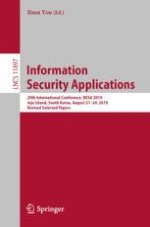This book constitutes the thoroughly refereed post-conference proceedings of the 20th International Conference on Information Security Applications, WISA 2019, held on Jeju Island, South Korea, in August 2019. The 29 revised full papers presented in this volume were carefully reviewed and selected from 63 submissions.
The primary focus of WISA 2019 was on systems and network security including all other technical and practical aspects of security application in general. The papers are grouped in the following topical sections: Application and Game Security; Network Security and Blockchain; Cryptography; Security with AI and Machine Learning; IoT Security; Hardware Security; and Selected Security Issues.
